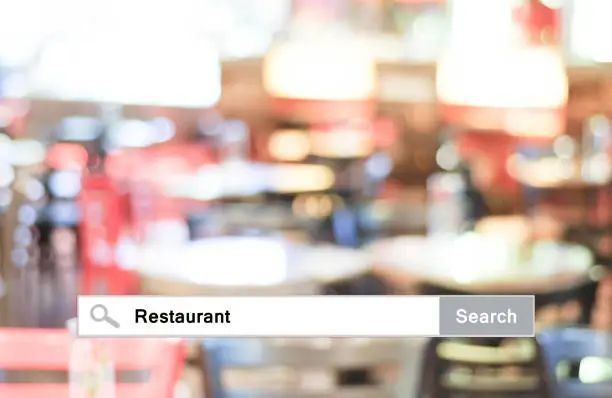The restaurant industry thrives on local customers. Whether it’s a cozy neighborhood diner or a high-end eatery, attracting nearby patrons is the cornerstone of success. In today’s digital-first world, most diners discover restaurants through search engines, relying on “near me” searches and location-based recommendations. That’s where local SEO comes into play.
Local SEO for restaurants focuses on optimizing your online presence to rank higher in local search results. It ensures your restaurant is visible on platforms like Google Maps, Yelp, and TripAdvisor when customers are actively searching for dining options in your area. This strategy can be a game-changer for attracting foot traffic, boosting reservations, and building your restaurant’s reputation in the community.
In this article, we’ll delve into what local SEO is, why it’s essential for restaurant owners, the benefits it offers, and proven strategies to make your restaurant stand out.
What is Local SEO for Restaurants?
Local SEO (Search Engine Optimization) for restaurants is the practice of optimizing your digital presence to connect with nearby customers. Unlike general SEO, which targets global search visibility, local SEO focuses on appearing in location-specific searches.
For example, when a customer searches for “best Italian restaurant near me” or “pizza delivery in [City],” your restaurant’s details—such as address, hours, reviews, and photos—should show up prominently in search results or Google’s Local Pack.

Local SEO uses tools like Google Business Profile, location-based keywords, and customer reviews to increase your visibility in local search queries. By making it easy for potential customers to find and choose your restaurant, local SEO bridges the gap between online discovery and in-person dining experiences.
Benefits of Local SEO for Restaurateurs
1. Increases Online Visibility
Local SEO ensures your restaurant appears in top search results for location-specific queries. It places your business where hungry customers are searching, improving your chances of being noticed over competitors.
2. Attracts More Foot Traffic
When customers see your restaurant listed in Google Maps or local directories, they are more likely to visit in person. Enhanced visibility can lead to increased foot traffic, especially for walk-in customers looking for nearby options.
3. Drives Online Reservations and Orders
Ranking for local keywords like “order sushi online in [City]” can lead to more online reservations, takeout, and delivery orders. This is especially important as more customers rely on convenience and mobile accessibility.
4. Builds Customer Trust

Appearing in local search results with positive reviews and high ratings establishes trust with potential diners. A well-optimized local SEO presence signals reliability and quality.
5. Enhances Competitive Edge
Local SEO allows small and medium-sized restaurants to compete with larger chains. By optimizing for location-specific queries, you can attract a loyal local customer base.
6. Cost-Effective Marketing
Unlike paid advertisements, local SEO is a long-term investment that doesn’t require recurring costs. With the right strategies, it delivers consistent results over time.
7. Improves Mobile Accessibility
Since most restaurant searches are conducted on mobile devices, optimizing for local SEO ensures your restaurant is easily accessible to mobile users, from maps to click-to-call buttons.
Proven Local SEO Strategies for Restaurants
1. Optimize Your Google Business Profile
Google Business Profile (formerly Google My Business) is the foundation of local SEO. To optimize it:
- Claim and verify your profile.
- Add complete and accurate information, including your restaurant’s name, address, phone number (NAP), website, and hours.
- Upload high-quality photos of your restaurant’s exterior, interior, and signature dishes.
- Regularly update your profile with special hours, seasonal menus, or events.
2. Use Location-Based Keywords
Keywords are the backbone of SEO. Include location-based phrases like “best family-friendly restaurant in [City]” or “late-night tacos near me” in your website’s content, meta tags, and blog posts.
Tools like Google Keyword Planner or SEMrush can help identify popular search terms in your area.
3. Encourage Customer Reviews

Online reviews are a crucial ranking factor for local SEO. Encourage satisfied customers to leave positive reviews on platforms like Google, Yelp, and TripAdvisor.
- Send follow-up emails requesting reviews after a visit.
- Respond to all reviews—positive or negative—to show you value customer feedback.
- Highlight positive reviews on your website and social media.
4. Build and Maintain Local Citations
Local citations are online mentions of your restaurant’s NAP information. These include listings on directories like Yelp, TripAdvisor, OpenTable, and Zomato.
- Ensure consistency in your NAP details across all platforms.
- Use tools like BrightLocal to find and manage your citations.
5. Create a Mobile-Friendly Website
With mobile devices dominating local searches, your website must be mobile-optimized.
- Ensure it loads quickly.
- Make menus, contact information, and reservations easy to find.
- Include clickable phone numbers for direct calls.
6. Leverage Social Media for Local Engagement

Social media plays a vital role in local SEO indirectly. Create location-specific content on platforms like Instagram and Facebook:
- Share photos of your dishes, events, or happy customers.
- Use location tags and hashtags to reach local audiences.
- Promote specials or discounts targeting local diners.
7. Add Geotagged Photos
Geotagged photos can enhance your local SEO efforts. By tagging your restaurant’s location in your images, you help search engines associate your content with your area.
8. Publish Localized Content
Blog about local food trends, dining experiences, or events in your area. Content like “Top 5 Brunch Spots in [City]” or “Best Places for Valentine’s Dinner in [City]” can attract organic traffic and position your restaurant as a local authority.
9. Invest in Schema Markup
Schema markup is code added to your website to help search engines understand your business. It can include information like your menu, pricing, hours, and reviews, enhancing your chances of appearing in rich search results.
10. Track Your Performance

Use tools like Google Analytics and Google Search Console to monitor your local SEO efforts. Track keyword rankings, website traffic, and conversions to identify what works and refine your strategy.
Conclusion
Local SEO for restaurants is no longer optional—it’s essential for connecting with diners in your community. By optimizing your online presence with strategies like Google Business Profile updates, location-based keywords, and engaging content, you can ensure your restaurant stands out in local search results.
At Marketing Techology, we specialize in SEO services and content marketing to help businesses thrive online. Let us help you drive more traffic, reservations, and revenue through effective local SEO strategies tailored to your restaurant.
Frequently Asked Questions
Why is local SEO important for restaurants?
Local SEO ensures your restaurant appears in search results when customers nearby are looking for dining options. It boosts visibility, foot traffic, and online reservations.
What keywords should I target for local SEO?
Focus on keywords that combine your cuisine and location, such as:
- “Best sushi near me”
- “Italian restaurants in [City]”
- “Late-night pizza delivery [Neighborhood]”
How do online reviews impact local SEO for restaurants?
Online reviews are crucial for building credibility and improving rankings. Positive reviews attract more customers, and actively responding to reviews signals trustworthiness to both customers and search engines.
For more insights or assistance, contact us today to elevate your restaurant’s local SEO game!


